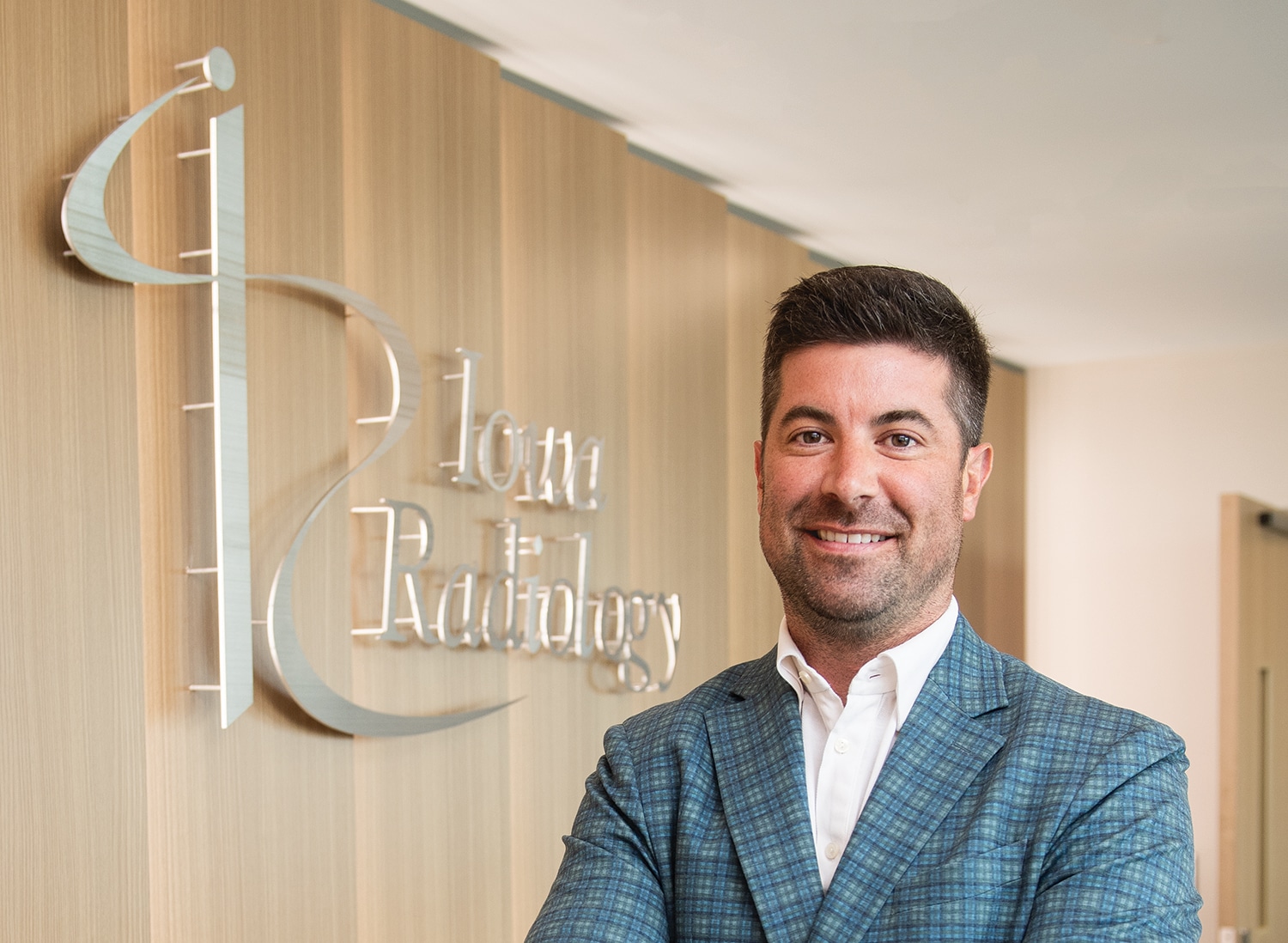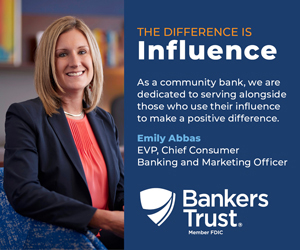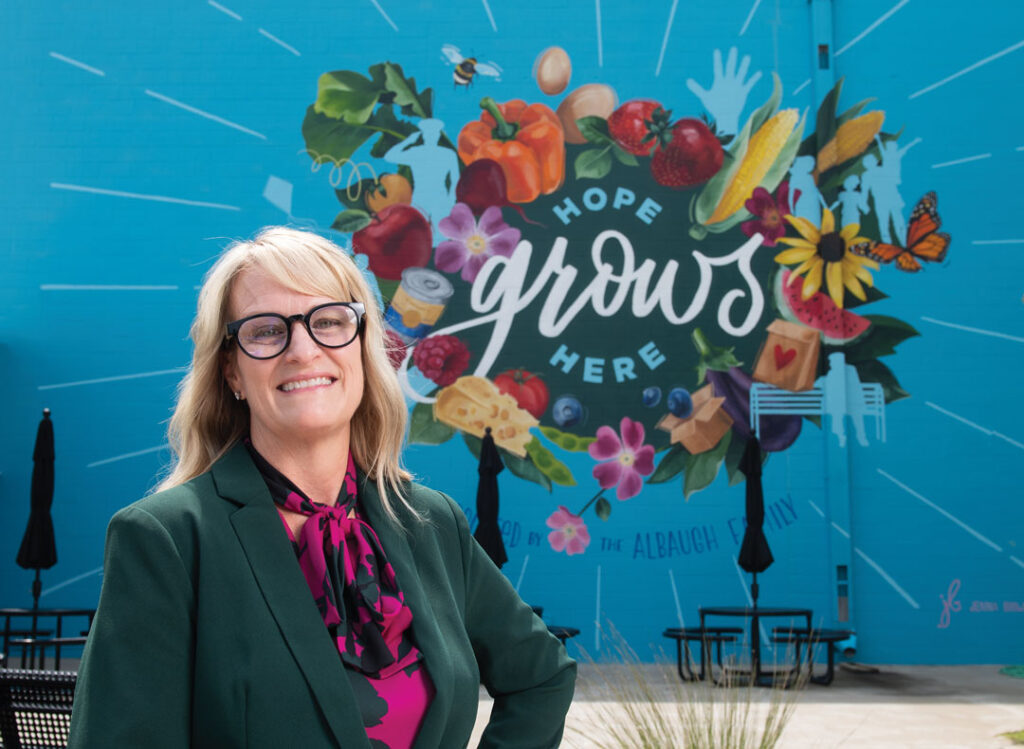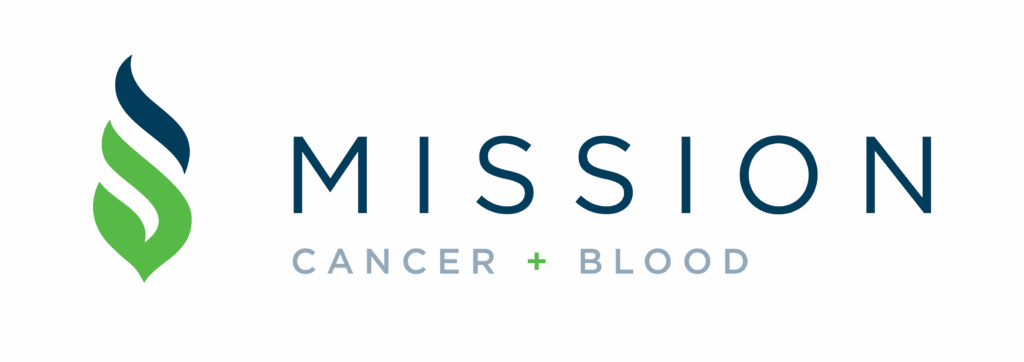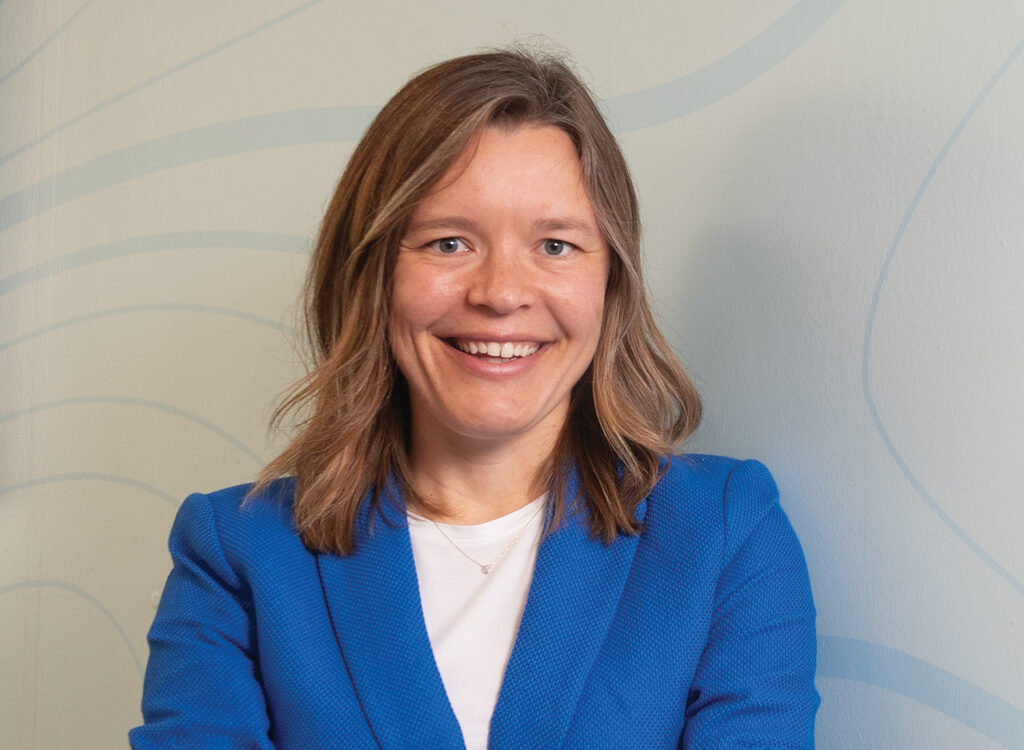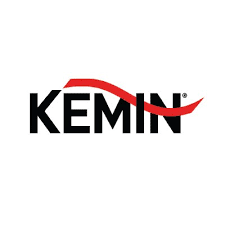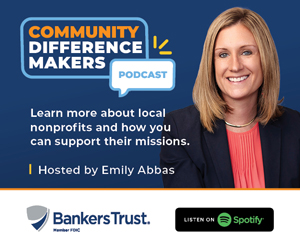A Closer Look: Kent Lehr
CEO, Iowa Radiology
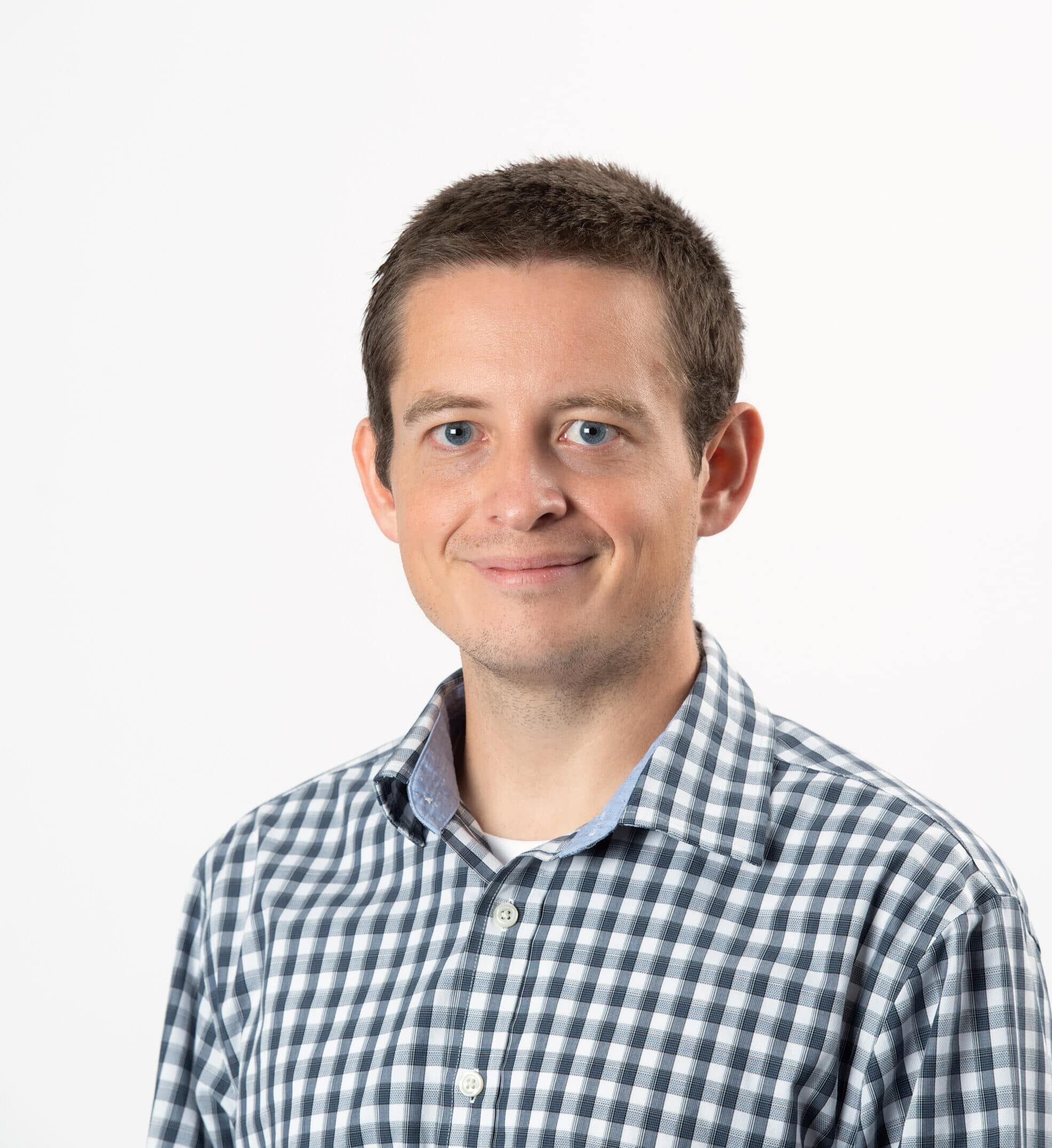
With no shortage of physicians in the family, health care was common table talk in the Lehr household.
Hearing stories from his dad, Dr. Stuart Lehr, about patient interactions, and seeing him start a new company as one of the original founders of Iowa Radiology, piqued Kent Lehr’s interest in the industry at a young age.
After more than a decade gaining executive health care leadership experience, Kent Lehr became CEO of Iowa Radiology in April.
“As I kind of grew into my formative years, I just was attracted to health care,” Lehr said. “My dad was initially the one that really got me into it because I loved hearing his stories. … And then as I watched him start a new company and go through all that challenge but also the reward of it, I really began to get interested in the business side and the administrative side of being able to provide great health care.”
At that moment, Lehr recognized there was more to health care than just the clinical side.
“It sort of was reinforced by a mentor of mine who invited me to Chicago to spend some time with him who was on the administrative side,” he said. “And that was where it just cemented in my mind that this is what I wanted to do.”
Lehr started at UnityPoint Health, then known as Iowa Health System, as an administrative fellow in December 2009 before becoming director of strategic growth in November 2010. He also served as system director of business development and vice president of strategy and business development with the company.
In August 2020, Lehr joined Sanford Health as chief of business development and strategic partnerships, and then became the founder of Pink Sky Ventures in January 2023.
While each transition required adjustments, none were as large as the one he faced when he lost his wife, Stacey, last year to cancer.
The Business Record recently caught up with Lehr to discuss his path to Iowa Radiology, the challenges ahead and the latest trends in health care that he’s following.
This Q&A has been lightly edited and condensed for clarity.
How did you end up at Iowa Radiology?
Right out of grad school, I came and worked at UnityPoint. At the time, it was called Iowa Health System. I was hired as a fellow. Basically, a fellowship in health care on the administrative side is a glorified internship. It’s a one- or two-year program; it’s kind of a leadership development opportunity. They move you around in different parts of the business, and during that time, you kind of work with various leaders in various facets of the business to essentially figure out what you want to do and where you might want to slide in for your first real job. Out of grad school, I moved back to Des Moines, honestly, because the leader at the time of Iowa Health, now UnityPoint, just won me over. He was a phenomenal guy, a great leader, and ended up being a great mentor of mine. So, I spent 10 years at UnityPoint Health in a variety of roles, and in 2020, I had the opportunity to step away.
A big part of how I ended up at Iowa Radiology is also personal. My wife was diagnosed with breast cancer in 2017, and then a recurrence in 2020, so work became very secondary to me. It was about her, it was about family, our kids. She was pregnant with our third child in 2020 at the time, and so I just made the decision to step away and focus on being with her and the kids and helping get her through it. And then I had an opportunity to join another health system in a similar but unique role.
We always talked if we were going to move, we wanted to do it when the kids were young. Stacey was in treatments, and they provided a great opportunity to move her into a wonderful setup from a care standpoint, care delivery standpoint. We jumped at it, and I spent some time there and as her treatments progressed, I started to take stock in what I wanted to do because when you go through something traumatic like that, you start to realize what’s important. I kind of shifted from thinking about what I wanted to do, what my goals were from a career standpoint, so what made me happy, and where I could make the most impact. And if I was going to spend time working and away from my family, what is something I could do that would provide me the energy and the reward that I was looking for at that time; now, with a whole new perspective. So, I stepped away from the provider side of health care entirely. I started a venture, a VC group, sort of getting involved in health care startups. I had done a lot with health care startups when I was at UnityPoint and with our innovation team, and I loved how they could come in and disrupt the status quo.
And my belief was if we were going to solve major problems in health care, we needed to be more disruptive, and not disruptive to create chaos, not disruptive for the sake of disrupting things, but disruptive for the sake of making giant leaps forward. And incremental steps, in my belief, were not going to be enough. So, I completely stepped away from the provider side and I was perfectly happy never going back. I was really into supporting small, innovative companies that were trying to make it off the ground that were making a big impact and had big visions in terms of what they could do for health care. And I was personally satisfied by that. I’m dealing with a family member, my wife, with a significant disease, and I didn’t love every part of how the health care industry was functioning as we were dealing with that.
We made the decision to move back to Des Moines. The nature of my work at that time was I could do it from anywhere. We wanted to move back to Des Moines to be closer to friends and family. It’s where Stacey and I met, we both considered it home, I grew up here. I started a health care technology company that was focused on building a system of care around people in their home. I was supporting some other health care ventures, and I got a call from Iowa Radiology, and sometimes the craziest opportunities come from some of the most difficult times in your life. The fact that my dad was one of the original partners mattered to me because I knew the group, I knew the culture, but it’s a different Iowa Radiology than it was in 2002 or 2001, when it was formed, and my dad’s long since retired. So, it really wasn’t about the family business; it was more about is it a good fit, No. 1. No. 2, here I grew up in a health care family, and it wasn’t until we were going through it as a patient did I realize the criticality of radiology and imaging in someone’s care pathway and in someone’s care plan. When I think about some of the most instrumental physicians who helped support Stacey during her diagnosis, her treatment, that whole care plan, it was physicians at Iowa Radiology who made a huge difference for us. And so when they called, it sort of blended the professional elements that I always loved, the personal components that I needed. And it was honestly just the right thing at the right time for everybody, and there was no way I could say no to it. So, here we are today.
What’s been the focus for you in these early months as CEO?
We live and die by having great partnerships, and so our No.1 priority was just to understand who our partners are, nurture those relationships and also identify are there other partnerships that we need. The second is our own culture. Health care is a tough industry from a labor perspective. We can’t do what we do without amazing staff — an amazing team of technologists and administrative and business and support staff — all here to support our physicians, who are spread across the country. We have 34 radiologists; we’re largely in Des Moines. We have physicians in Fort Dodge, we have physicians in Carroll, Iowa, and then Iowa Radiology has physicians across the country that help us with teleradiology coverage for multiple sites of care. Culture and the way that we operate, the efficiency with which we operate, matters because that’s how we attract and retain great talent, and this is a talent- and a human-driven business. I’ve been extremely focused on just trying to get out there and ensure that we’ve got the right technologies, support staff, management in place, to support our technologists and our physicians. And then I think third is just understanding the business side. I’ve been in health care for a decade and a half and lived it growing up. But until you really get into a certain part of that business and peel back the onion layers and talk to people and ask a lot of questions, just building that deep understanding of our business operations, so that I can make the right decisions and help support our team to make the right decisions so that we can continue to provide care for patients here and far away from Des Moines for years to come.
What do you find most rewarding about your work?
The people, by far. I wouldn’t have taken the job without knowing I was joining a team of great people. And our physicians, they’re not just great physicians, they’re good human beings. They approach their work with the right balance, they’re family oriented, they understand the importance of great patient care, they’re a team. They’re driven by the right goals, and that No. 1 for me is energizing. I said it during the process of evaluating this opportunity, if it was a broken situation that I was coming into, and you wanted someone to turn it around, I probably wasn’t the guy. I felt like one of the most rewarding things was a strong team and just trying to support it and make it stronger. How do we grow in the right ways? How do we take care of more people who need it? How do we do it in locations that are close to their home, that are convenient for them to access and be a seamless part of the health care continuum? And I think third, which is a little different than some of the roles and opportunities that I’ve had in the past, is it’s a really good blend of my skill set and expertise and just energy around the health care industry, but also the entrepreneurial piece. It’s really fun to get up and go to work and be able to make decisions quickly, work with a team that can diagnose an issue, come up with solutions and implement quickly, and that’s really hard to do. When you’re in a big multistate health system, it is really hard to be quick and nimble, and entrepreneurial, because the machine has a lot of inertia. We’re a large imaging and diagnostic group, the diagnostic center, but the physician partners, the team, our leadership group, has a culture of being able to make decisions quickly and in the best interest of the people that we serve. And I love blending my history of the venture side, the entrepreneurial side, but also doing good through great health care delivery. And that for me is what won me over.
What are some of the biggest challenges you’re facing as CEO of Iowa Radiology?
It’s multifaceted. I’ve always believed if you’re in a company where the foundation or the nucleus is strong, then you spend a lot of time focused on the external. But ultimately, you’re your own worst enemy because if you can focus on yourself and you do the right things, the right way, then I believe your operation, your business will succeed as a result of that focus. For us, it’s a little bit internal. We have grown really quickly. When the group was founded in 2001, it was seven physician partners; we’re at 34 physicians now. The breadth and depth of Iowa Radiology is phenomenal. We’re a private practice, physician-owned, physician-governed group. We’re unique in the country, especially with the level of technology that we have, the breadth of services we offer, so it’s just maintaining and growing that, and making sure that we continue to be a great partner in the community and a great partner for the clinicians that we work with, the systems that we work with. That to me is always a challenge because you never want to miss a step. The second piece is just the industry at large, which is health care is a tough industry to be in. With labor, you can’t continue to throw more people at more problems and expect to see our health care costs and the degree of health care become more efficient, or costs go down, or services improve. And so our goal is to attract the best talent and ensure that we have the best talent in place, retain them. We’re not chasing the labor game that is affecting so many. Labor has been a huge challenge really since 2001, 2002, for everybody, but I think health care has been kind of acutely affected by it. We’re constantly looking at ways we can leverage technology to be more efficient, leverage technology to help support our people. We never feel like we’re on our backfoot when it comes to talent.
How has technology changed your job?
My job is just being more open to different technology solutions that we would pair with human talent to help them do their job better. Our end goal is we have to continue to be able to do more with less; that’s what everyone’s being faced with. From my perspective, it’s one, driving a culture of innovation. One of my favorite books is [“Dual Transformation: How to Reposition Today’s Business While Creating the Future”]. It talks about sort of the performance engine of the enterprise. It’s just our core. It’s how we do business. We get up every day, we do these things well, we put out a good product or service out there, for any company. But the transformation B (“Dual Transformation” defines transformation A as repositioning today’s business to maximize its resilience, and transformation B as creating a new growth engine) is sort of the innovation engine, and you have to link those two. So, I want to make sure we’re putting out a high-quality, highly consistent, accessible service for patients and our partners. At the same time, I want to make sure we’re always innovating. So from my chair, it’s just driving a culture through the organization that we are going to be on the forefront. Luckily, in radiology and imaging, our physicians are already there. Just by the nature of our business, technology is constantly evolving, and we have a group of physicians that is extremely interested in always being on the front of not the leading edge because we want to be reckless, but leading edge because that’s the best for our community and the people that we serve. Where I spend a lot of my time is focusing on the business side of the administrative function, our technologists and staff, just trying to explain to them why innovation is critical. And if we’re not innovating, we’re dying. That’s how it’s probably changed my perspective over the last 10 to 15 years, especially now. If you move too slowly, you risk missing opportunities to do great things for the patients and the people that we serve. That’s important to me. For our team, it changes everything. It changes their workflows, their processes, how they approach their job, how they approach patient care. It’s the real deal, which is why it’s important that we don’t get out in front of our skis and do too many things too quickly. We need to make sure we’re doing it in a way that’s in the best interest of the patients.
Will you share what a typical day looks like for you?
I’m not sure there is a typical day anymore. I wake up early, I get the three kids up. We have great family and support that allows me to come to work. It’s more like a week, a typical week. Half the time, I’m in the office, and it’s the typical meetings, it’s meeting with people, it’s the conversations, but I’m not a guy who can sit still. Our team, I think, is starting to see that. I like to be out in our clinics, I like to be out in our imaging centers at the hospitals where we have physicians, where we’re taking care of patients. That was the part I missed when I was in the corporate side of health care for 10 to 12 years and really not until we went through what we did with Stacey, health care delivery, and what it feels like to be a patient. I like to be where the action is. That’s the other half, making sure I’m interfacing with our physicians, with our physician partners. Partners of ours, whether it’s UnityPoint Health or Mission Cancer + Blood, or any of the many partners we work with, I like to be out and engaging with our team and our staff as well. One of the things I love about this group and this company is the focus on family. I kind of call it One Iowa Radiology. We have a lot of facets of our company, but we’re One Iowa Radiology, one team, one family, and family is important. That’s one of the things that over the last few years, I think has been a very, very big focus of mine, so I want to maintain a strong presence at work and in the community but also an extremely strong presence at home. And this is an organization that allows us to do that.
Do you have a memorable patient experience working in health care that had a significant impact on you?
Our own, without a doubt. When we were in and out of the hospital in 2020, it was an interesting time. You had COVID, you had all these restrictions as to who can go in and out of the hospital, who can go in and out of the patient room. Stacey delivers Olivia, our third child, and is immediately admitted into the oncology unit and is going between oncology and the NICU. I remember at the time, it was surreal. The maternity unit and the NICU are some of the happiest places in the hospital, maternity unit, for sure. Happiest nurses, everyone’s excited, what a great experience bringing life into the world. It’s typically a very positive experience, and then you’ve got the oncology floor, or [medical-surgical unit]. And you’re just looking at the complexity and the breadth of various patient conditions and the things people are dealing with. And I just remember thinking to myself, this is surreal. Here I’ve been in health care for a long time, and I never really appreciated how the internals of the hospital operate, and the health care system operates, from a patient point of view. And I think what was most impactful for me while bouncing around all these places, other than just trying to take it all in and manage it, was the nursing staff. It was unbelievable to me to watch what they did, how they did it, with what they were up against. Taking care of countless patients, countless different challenges, constantly understaffed, working day and night, and I’m there the whole time. So, I’m seeing the shift changes. The beauty of 2020 was we were at the very bottom. It was a crazy situation, but thank God Stacey started responding to treatment. The team of physicians around her were unbelievable here in Des Moines. And all of a sudden, she starts rebounding, which no one really expected, so we got a second lease on life, we got three years. I remember we were kind of coming out of the fog, and she’s sitting there talking about how grateful she is and how blessed we are. And we’d go through these experiences with this physician or that nurse and would just remember how impactful those things were for her and for us at a time when you’ve got nowhere to turn. And here they are, and they’re helping you get through it. That, to me, was why I probably fell in love with what I’m doing now again.
What advice would you have for someone interested in pursuing a career in health care?
Go in eyes wide open, and then shut one eye. It’s like a marriage, right? Joking aside, it’s kind of true. I remember getting out of grad school, going in and thinking I want to do all these things, this is a great industry, and it’s helping people. You get in, and you realize there are a lot of challenges, but that’s what should attract people to the industry, the challenges, because we ultimately have to continue to work together to overcome them. I think the big thing I would tell somebody, if I had to distill it down to one piece of advice, is you can’t do anything on your own anymore. You can’t be successful as an individual without a great team, great mentors. You can’t be successful as an organization without great partnerships. You can’t be successful as a department without working with other departments. I think one constant theme throughout my career track has been all of our success has always been due to multiple people in multiple teams or multiple organizations working together on something common. No one can be successful in and of themselves, and I think that’s probably the biggest thing, especially in health care. There’s just not one person, one department, one specialty that can do it all. So you’ve got to be open-minded, you’ve got to be collaborative, and you’ve got to really seek out the right partners to be able to achieve a common goal.
With health care being all about taking care of others, how do you take care of yourself?
My wife would always say that I have no shortage of hobbies, and that still exists today. I am running a marathon this year. I’ve never run a marathon, but I’m a runner. I’ve always done triathlons and mainly halfs. Three kids keep me on my toes, so we’re always outside, fairly active. I used to race cars. I’m into aviation. I try to do anything I can to one, constantly be learning and to make sure I’m taking time to just extricate myself from the daily grind, so when I come back, I’m energized and excited. If you have the right hobbies, they can teach you a lot about who you are, and they can help you approach your career, your family, or other challenges in your life in different ways, and that’s how I’ve found my hobbies to help me.
Which marathon?
I’m doing the Marine Corps Marathon in Washington, D.C., in October, so I still have time. I keep telling myself I’m going to run more tomorrow.
Are there any recent trends or developments in health care that excite you?
There are macro or global trends, which I think are exciting, but it’s easy to get excited about things like value-based care and risk. And how do we, as providers, shift more of the risk back to us to take care of people? In practice, it’s harder to see how that plays out, and it plays out at different speeds across the country in different ways. For us, at Iowa Radiology, I’m excited about just the constant evolution of technology. AI is a buzzword right now, and I think AI makes some people really excited and gets some people really nervous. I’m somewhere in the middle. I think we should be excited about its potential, but we need to be really specific and intentional about how we could use it to support our physicians, support our technologists, for the betterment of patient care. At Iowa Radiology, we’re trying a couple of AI tools in experiments with a very specific set of metrics and targets that we want to achieve, and if we hit those targets, then we look at how we expand that out and scale it across the practice. But it’s only until we’ve tested it and our physicians feel confident that it’s actually going to improve what they do and how we take care of people. But that gets me excited because I’ve always had more of a bent toward the strategy side — growth, innovation.
Will you share about the tools you’re using?
If one of our physicians is diagnosing a disease, after they’ve completed the study, they have to dictate that study, and that dictation goes into the patient notes. And those patient notes then go into a broader care plan in the patient record. Every time our physician is dictating a case and adding to a physician record and adding those notes to a care plan, that is obviously a big amount of work because they’re kind of collapsing everything that they’ve identified as part of the study or part of the procedure and they’re getting it in those notes. We’re starting to use AI technology to ensure that we’re capturing the right things to put into those notes. One, it helps our physicians be more comprehensive and more efficient, which allows them to be able to get more work done throughout the day. One of the hardest parts of imaging is you’ve got this bolus of work that’s flowing up and down throughout the daytime hours, and the things that you can’t get to get shifted to the evening hours, and then they get shifted to the overnight hours. We’re always working, so the more efficient our physicians and our technologists can be, the faster we can get results back to the surgeon, the faster we can get results back to the patient and back to the other providers in the care plan. So we’re starting to use AI technology to help our physicians improve their ability to get diagnosis and treatment plans into those notes more comprehensively, more quickly, so we can turn that around and ultimately speed up the care plan. As the husband of someone who went through the worst of it, that time matters. And every minute or every hour or every day, you’re waiting for your PET scan results, or for your MRI results, or for your mammogram results, and it’s excruciating. So we are always trying to improve how quickly we can turn around our diagnosis and treatment plans as part of the bigger care plan because it matters to the patient. So we’re using some AI tools now; we’re testing them across the practice. We look forward to continuing to roll out things like that. I believe Iowa Radiology is the most comprehensive, most innovative, has the greatest depth of any imaging practice in the region. We’re always looking at ways we can continue to improve.
At a glance
Hometown: West Des Moines
Education: Master of Business Administration, the University of Iowa Tippie College of Business; and Master of Health Care Administration, the University of Iowa College of Public Health.
Family: Three kids: Jude, Louis and Olivia.
Activities: Running, racing cars, aviation, spending time outdoors with the kids.

Kyle Heim
Kyle Heim is a staff writer and copy editor at Business Record. He covers health and wellness, ag and environment and Iowa Stops Hunger.

